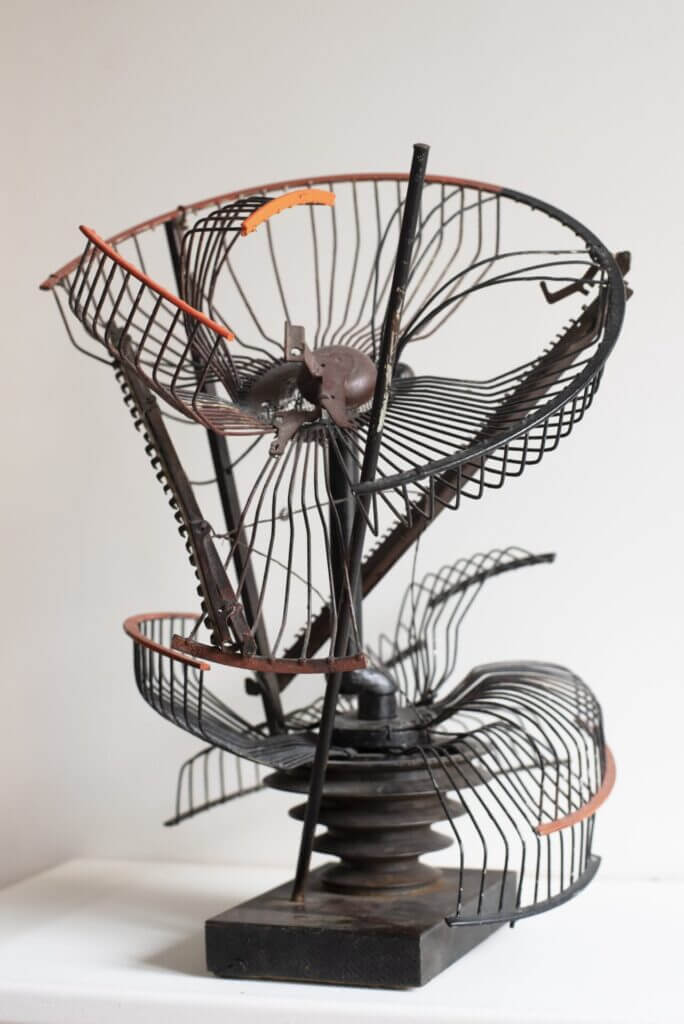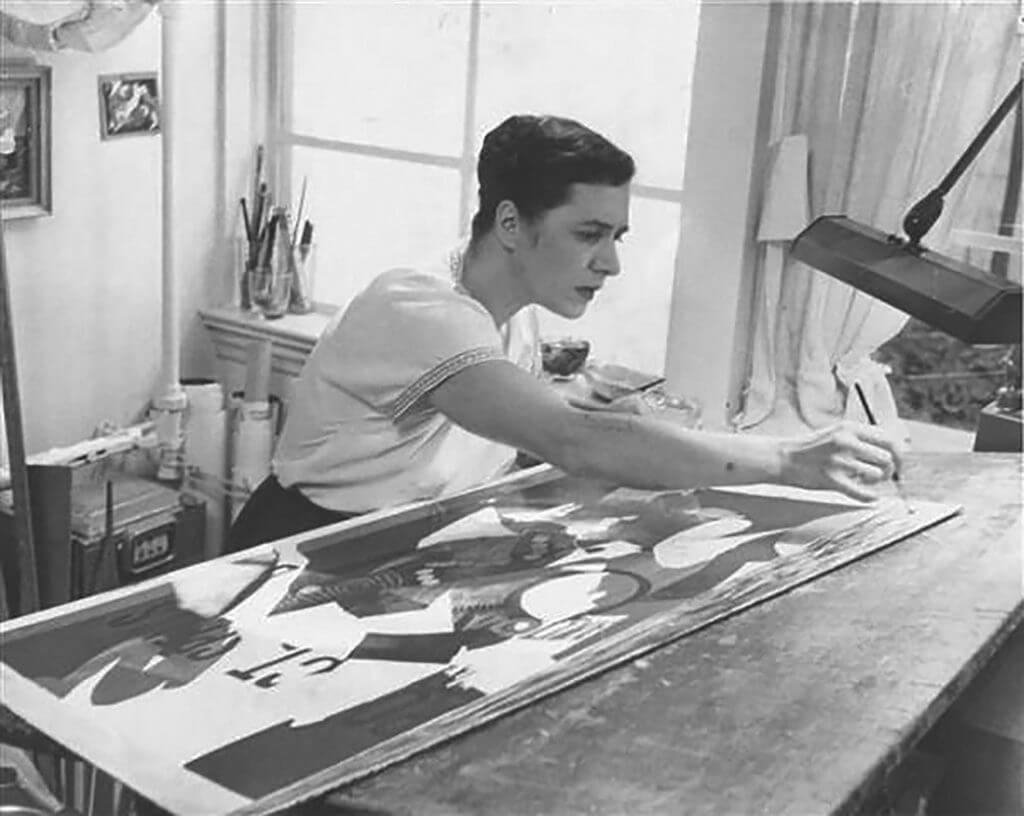Your currently viewing RAW Modern | Switch to RAW Contemporary
The Madly Scrambling Circles of Upward Mobility, 1950
Over the course of her 70-year career, Esphyr Slobodkina was a pioneer of early American abstraction and thus a significant participant in the avant-garde activities and exhibitions of the 1930s and 40s, which helped achieve recognition for abstract art in the United States. Throughout her artistic journey, Slobodkina remained dedicated to presenting the world as she saw it, geometrically, dimensionally, always in motion and non-linear.
From the 1930s onwards, Esphyr Slobodkina began to make sculptures out of humble everyday objects – typewriters, clothes hangers, pieces of old furniture – giving them a new reality and an independent existence of their own. These works embodied Marcel Duchamps’ specific definition of the “ready-made” as “an ordinary object elevated to the dignity of a work of art by the mere choice of an artist” – In this instance, Slobodkina uses a simple fan to create a compelling sculpture, infusing the mundane with artistic significance. Irritated with the contemporary “sloppy” use of the English language, she gave these sculptures humorous and wonderful titles, such as The Saddly Sagging Educational Spiral, or, as with this artwork, The Madly Rushing Circles of Upward Mobility (which reflects her lifetime fascination for architecture and mechanics but also refers to the postwar economy which provided remarkable upward mobility for many Americans).

